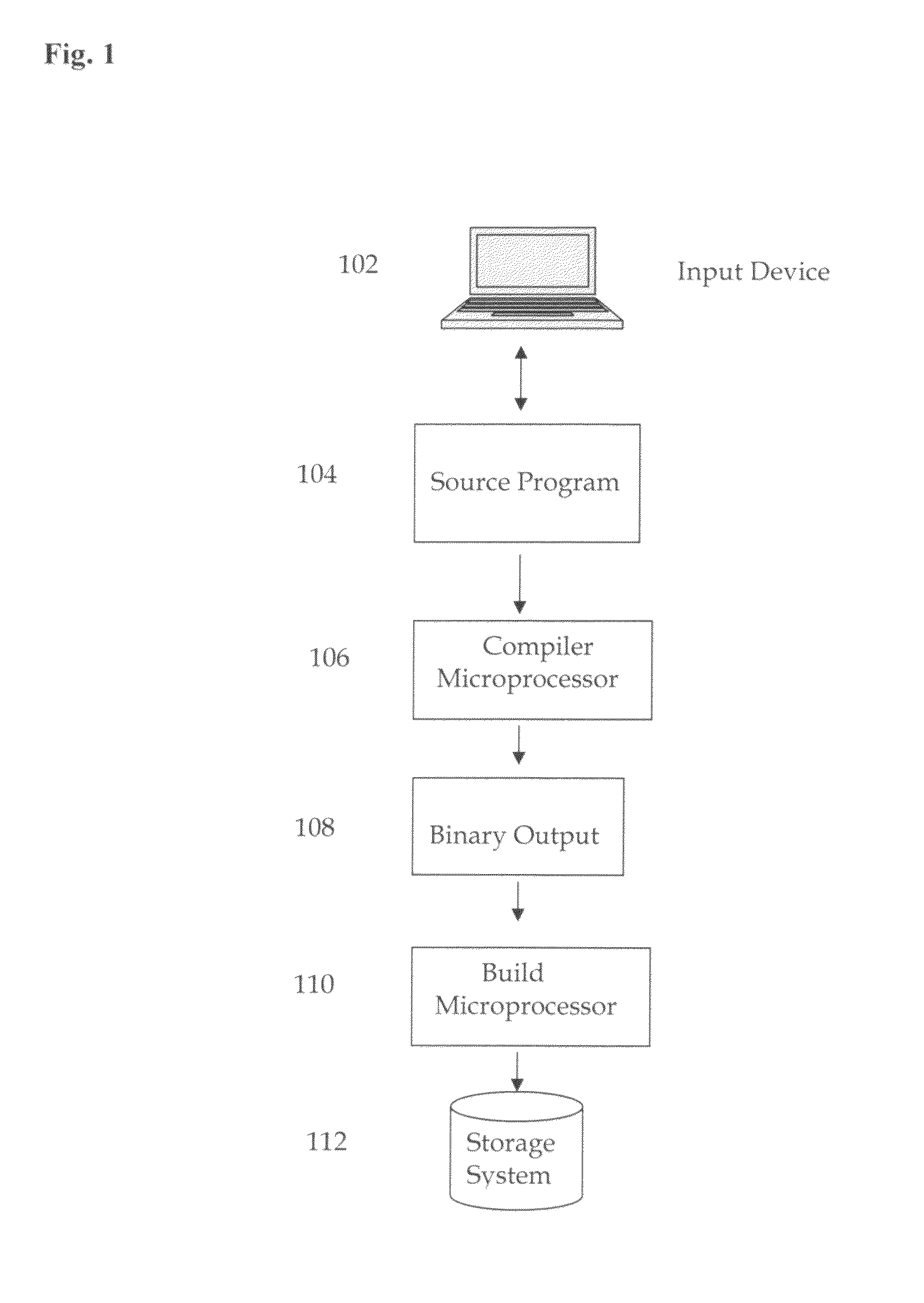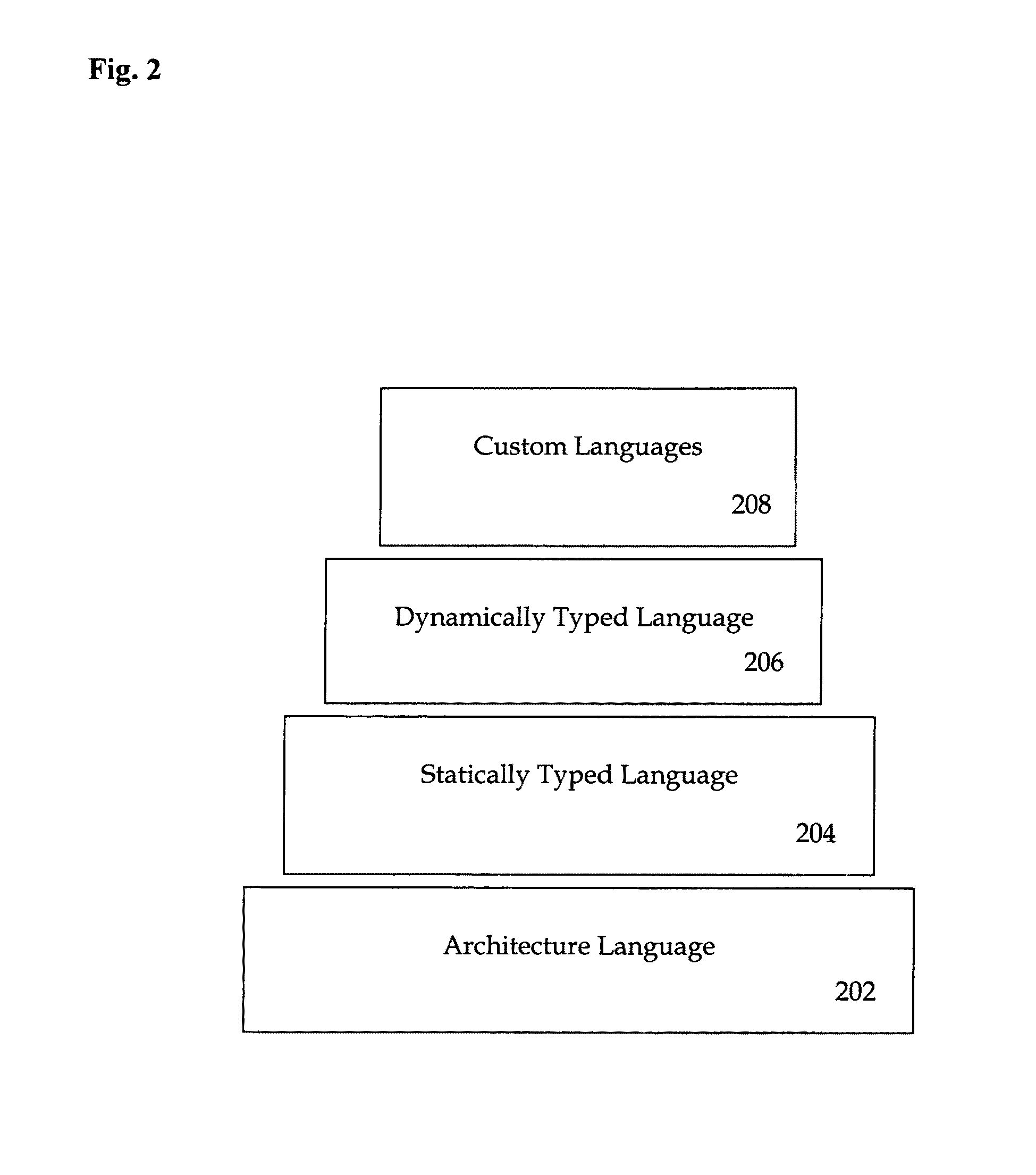System and method for effectively processing software changes
a software change and system technology, applied in the field of system and method for making changes to software programs, can solve the problems of high price, software professionals suffer, and companies pay high prices, and achieve the effect of increasing flexibility of changes, convenience and transparency
- Summary
- Abstract
- Description
- Claims
- Application Information
AI Technical Summary
Benefits of technology
Problems solved by technology
Method used
Image
Examples
Embodiment Construction
[0019]FIG. 2 illustrates a layered structure of a software program wherein a software program is programmed and divided into four layers of programming languages according to a mixed language programming process of this invention. A bottom and foundation layer is program with an architecture language 202 for defining the components and their relations and any other constraints for a software program. A second layer on top of the architecture language layer 202 comprises modules and software components programmed by using a statically typed language 204. A third layer 206 comprises software programs programmed by using a dynamically type language to crease dependences of these components. A top layer 208 comprises software programs programmed by using a custom language to define logic or rules based on context created on dynamically typed language 206. Custom languages could be domain specific languages like spreadsheet. One benefit of using these four layers of languages is that any...
PUM
 Login to View More
Login to View More Abstract
Description
Claims
Application Information
 Login to View More
Login to View More - R&D
- Intellectual Property
- Life Sciences
- Materials
- Tech Scout
- Unparalleled Data Quality
- Higher Quality Content
- 60% Fewer Hallucinations
Browse by: Latest US Patents, China's latest patents, Technical Efficacy Thesaurus, Application Domain, Technology Topic, Popular Technical Reports.
© 2025 PatSnap. All rights reserved.Legal|Privacy policy|Modern Slavery Act Transparency Statement|Sitemap|About US| Contact US: help@patsnap.com



